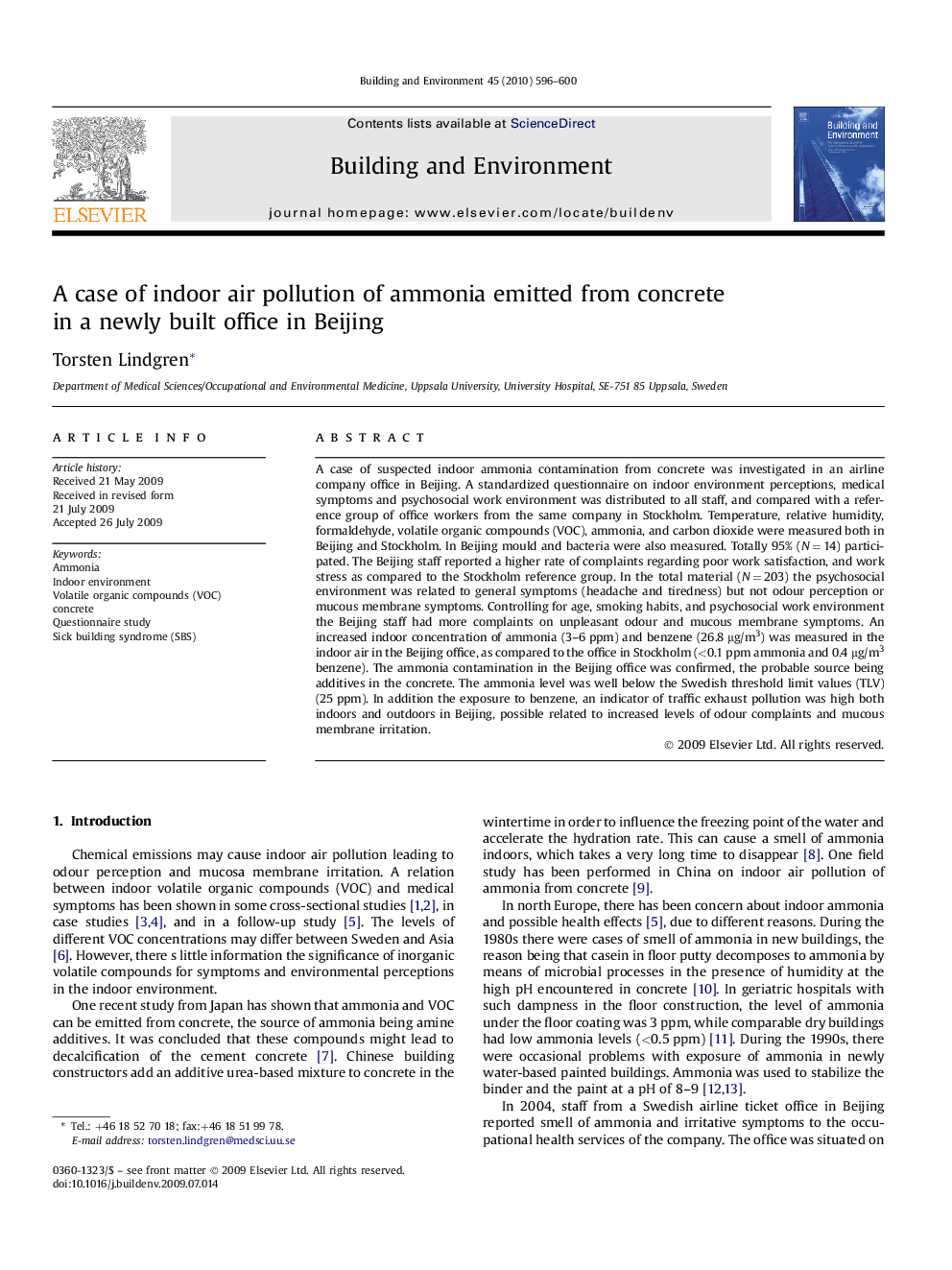| Article ID | Journal | Published Year | Pages | File Type |
|---|---|---|---|---|
| 249388 | Building and Environment | 2010 | 5 Pages |
A case of suspected indoor ammonia contamination from concrete was investigated in an airline company office in Beijing. A standardized questionnaire on indoor environment perceptions, medical symptoms and psychosocial work environment was distributed to all staff, and compared with a reference group of office workers from the same company in Stockholm. Temperature, relative humidity, formaldehyde, volatile organic compounds (VOC), ammonia, and carbon dioxide were measured both in Beijing and Stockholm. In Beijing mould and bacteria were also measured. Totally 95% (N = 14) participated. The Beijing staff reported a higher rate of complaints regarding poor work satisfaction, and work stress as compared to the Stockholm reference group. In the total material (N = 203) the psychosocial environment was related to general symptoms (headache and tiredness) but not odour perception or mucous membrane symptoms. Controlling for age, smoking habits, and psychosocial work environment the Beijing staff had more complaints on unpleasant odour and mucous membrane symptoms. An increased indoor concentration of ammonia (3–6 ppm) and benzene (26.8 μg/m3) was measured in the indoor air in the Beijing office, as compared to the office in Stockholm (<0.1 ppm ammonia and 0.4 μg/m3 benzene). The ammonia contamination in the Beijing office was confirmed, the probable source being additives in the concrete. The ammonia level was well below the Swedish threshold limit values (TLV) (25 ppm). In addition the exposure to benzene, an indicator of traffic exhaust pollution was high both indoors and outdoors in Beijing, possible related to increased levels of odour complaints and mucous membrane irritation.
